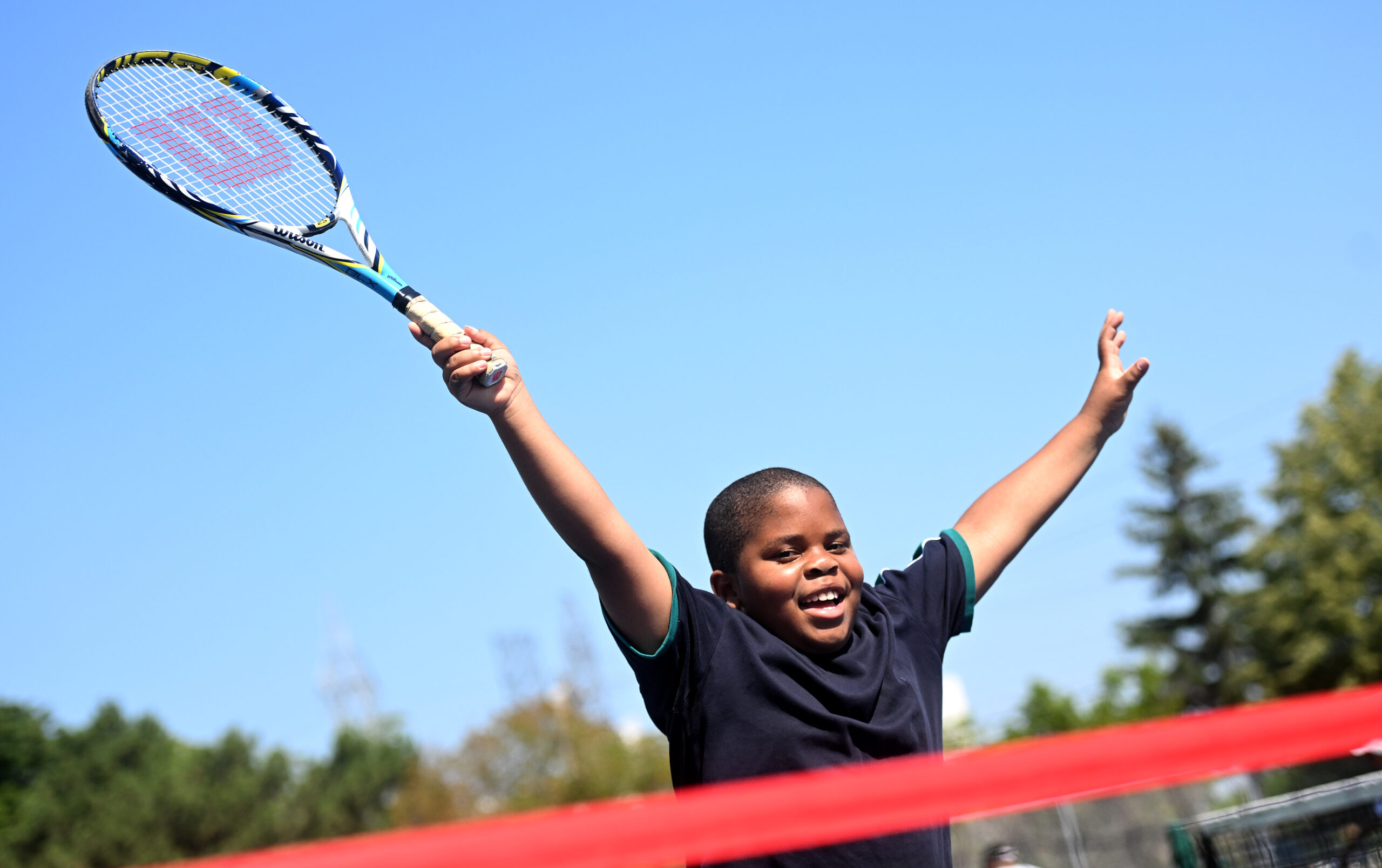“…After covid-19, it is essential that everyone with a now dwindling motivation for sports and athletics get the support, resources, and information, needed to get back in the game. The mental and physical health of the people of our country, cities, and communities are so fundamental to a well-functioning society – and sports is the solution we need after COVID-19.”
Age 20, participant in MLSE Change the Game Research Initiative
The Covid-19 pandemic gave us a rare look into what life is like without sport. Regardless of neighbourhood, community, or income bracket, we all related to the sense of loss and frustration from being unable to participate in sports and activities.
Whether it was missed events and competitions, missed friendships, or just the feeling of being active; the absence of sport led to complex consequences that we are still unravelling. What we do know, is that our inability to access sport for long stretches during the pandemic affected the overall well-being of our children.
Although public health measures were well understood by families; and children and youth eagerly followed safety protocols for the public good; the shutdown of the sport and recreation sector left our kids moving less, sitting more, and feeling worse.
Still, we come out of the pandemic with a better understanding of what sport and recreation means to our overall health. We have gained perspective and learnings that can help us improve accessibility and positive experiences in sport. Perhaps, we even have a new level of awareness and empathy for those who face barriers to sport participation every day.
It’s these findings and revelations that give us renewed vigor and confidence to prioritize sport and recreation, for ourselves, our children, and everyone in our community. Because we know now more than ever, that for healthy activity; for time with friends; for a sense of purpose; for the chance to grow strong and develop; for feelings of belonging; and for our overall health and well-being….sport is essential.
THE PANDEMIC WORSENED MOVEMENT TRENDS FOR CANADIAN CHILDREN & YOUTH
For some time now, movement trends among Canadian children and youth have been declining, and sedentary behaviours increasing. The pandemic exacerbated both these trends, as sport and recreation facilities closed, and screen time became necessary for both education and social activity.
In Canada, only 12.7% of children and youth ages 5-17 met 24-hour movement guidelines pre-covid. During the first few months of the pandemic, those numbers fell to fewer than 5% of children and 1% of youth; and this drop persisted throughout the pandemic.
It is no surprise then that the 2022 ParticipACTION Report Card on Physical Activity for Children and Youth gave a grade of “F” in the categories of physical activity and sedentary behaviour.
There were also deep declines in sport participation that have continued. Less than half of kids who participated in team sports prior to the pandemic are engaged in their sport now. Further, less than 25% of youth are participating in a sport activity more than once per week, compared to more than 70% pre-pandemic. All these findings speak to the urgent need to address physical activity levels for kids.
LINK BETWEEN PHYSICAL AND MENTAL HEALTH IS ACKNOWLEDGED FOR THE FIRST TIME BY WORLD HEALTH ORGANIZATION
The link between physical activity and healthy physical development has been well documented and universally accepted; however, 2022 marked the first time that the World Health Organization (WHO) acknowledged the link between physical activity and mental health in their published Physical Activity Guidelines.
Backed by several studies conducted during the pandemic, the association between physical activity and mental health has never been clearer. Findings show time and again, that the combination of decreased physical activity and increased sedentary behaviour is linked to poorer mental health outcomes. The Hospital for Sick Kids reported over half of children aged 8-12 years old and over 70% of adolescents reported clinically significant depressive symptoms during the pandemic; leading to their urgent call for a return to in-person learning and sports activities. Additional studies have shown that those who were able to increase physical activity from their base level, fared better during the pandemic than those who reduced their physical activity from pre-pandemic levels.
SPORT IS UNIQUELY POSITIONED TO POSITIVELY IMPACT BOTH PHYSICAL AND MENTAL HEALTH
Despite an uptick in individual activities such as running, strength training, and conditioning during the pandemic, the increases were small compared to the lost activity from organized and facility-based sports such as soccer, tennis, swimming, basketball, and baseball. Sports can be an easier, organic, and often preferred way to meet our daily movement guidelines.
Further, the combination of physical activity and social interaction that naturally occurs through sport can provide a sense of community and belonging which is crucial for our kid’s physical and mental health. MLSE Change the Game Research reported that youth who participated in sports within the past two years were 91% more likely to list a very strong sense of belonging to their community; and 74% of youth who participated in sport reported feeling somewhat or strongly connected to their community. These findings were strongest among newcomer youth, youth from the GTA, northern Ontario and southwestern regions of Ontario.
HOW TO GET KIDS BACK IN THE GAME
Expand Low-Cost Access to Sport
Youth across all income brackets and demographics cited “making sport more affordable” as the top priority in being able to return to sports; 47% of youth also indicated that free or affordable equipment was important to make sport accessible to them. It is critical to address the most significant barrier of cost, in order to get kids back to sports and healthy activity.
Tailor Programming to why kids play the game: Make it fun, social, and safe
The pandemic created an opportunity to reflect on what kids missed about sport and why they play. MLSE’s Change the Game research found that most kids listed the availability of a sport they enjoyed, being with friends and teammates who welcomed them, and sound health and safety practices as the top motivators. These factors were highest amongst youth from low-income households, with higher income households choosing performance related goals as well.
Feedback from youth on what will bring them back to sport post-pandemic
- 65% cited sports they like being available
- 65% identified an opportunity to play with friends
- 53% reported feeling welcomed as part of a team as key for their participation
- 52% called for sound health and safety regulations
Now, more than ever, we need to get kids back in the game. The pandemic provided a glimpse into what life is like without sport and also created unintended consequences of significantly reducing our kids physical activity and overall well-being. Through our own lived experiences during the lockdown periods, and backed by numerous studies conducted during the pandemic, we know that sport and recreation leads to physical and social activity that gets our kids moving more, sitting less, and feeling better. In short, sport is essential!

References:
- MLSE Foundation: Change the Game Research: A Study focused on youth sport access, engagement, and equity factors in the wake of the pandemic; July 2021.
- ParticipACTION. Lost & Found: Pandemic-related challenges and opportunities for physical activity. The 2022 ParticipACTION Report Card on Physical Activity for Children and Youth. Toronto: ParticipACTION; 2022.
- Tao CS, Zhu L, Strudwick G, et al. The impact of physical activity on mental health outcomes during the COVID-19 pandemic. Science Briefs of the Ontario COVID-19 Science Advisory Table. 2022;3(62). https://doi.org/10.47326/ocsat.2022.03.62.1.0
- Canadian Society for Exercise Physiology (CSEP), Canadian 24-Hour Movement Guidelines for the Children and Youth 5-17 years: an Integration of Physical Activity, Sedentary Behaviour, and Sleep.




